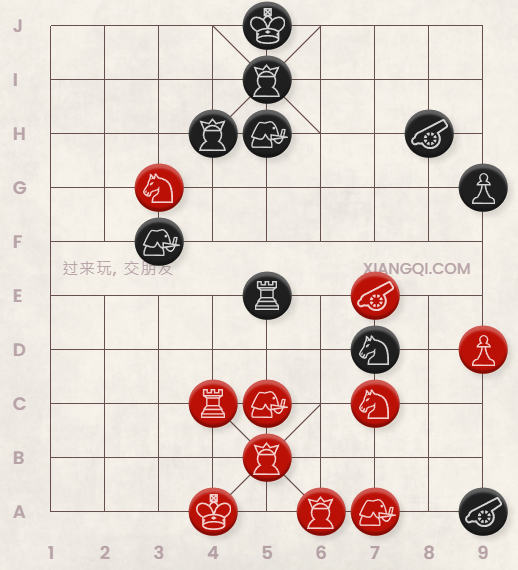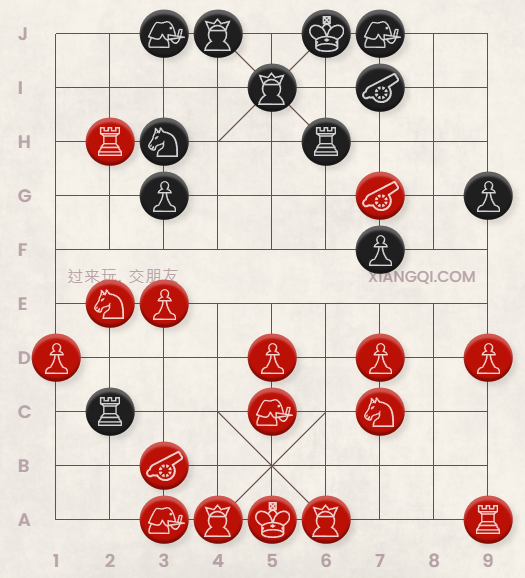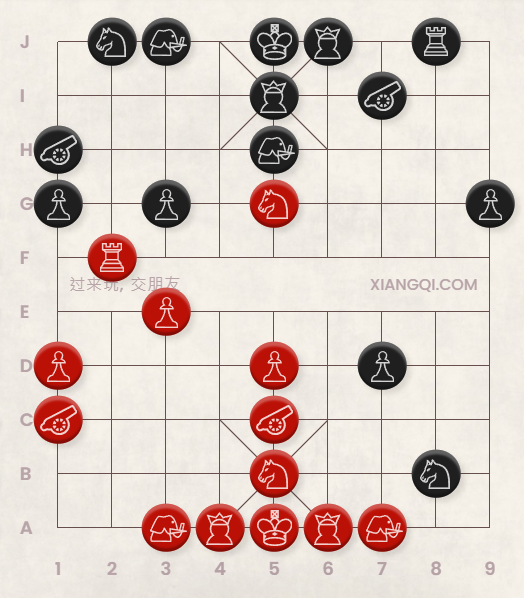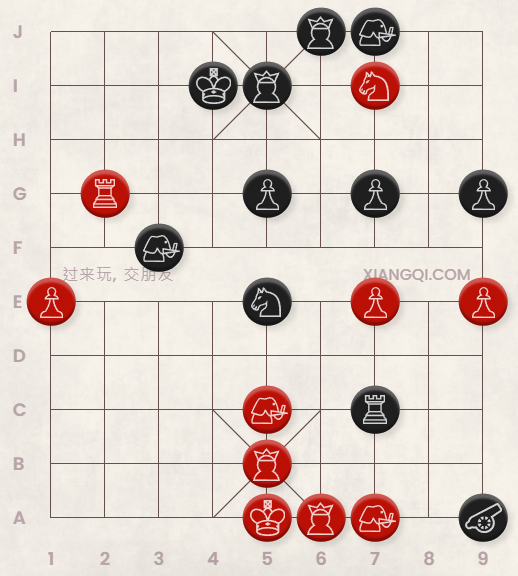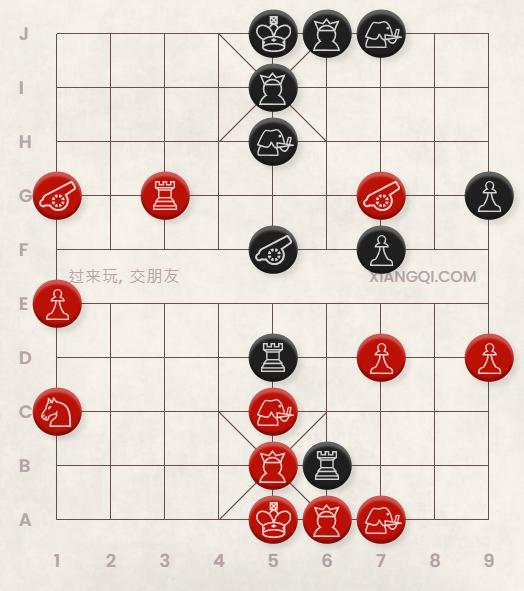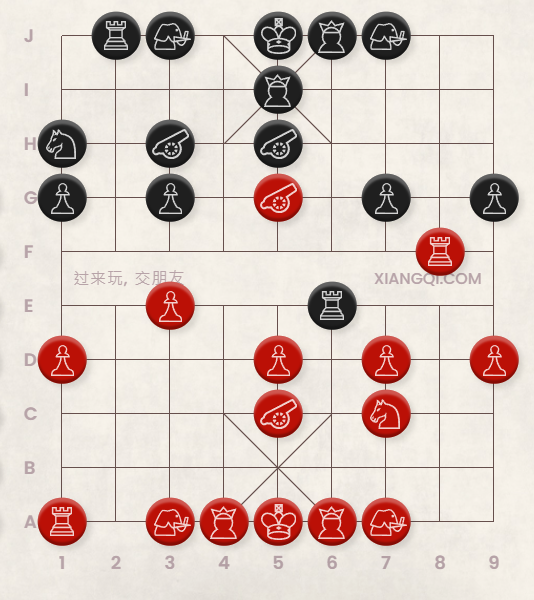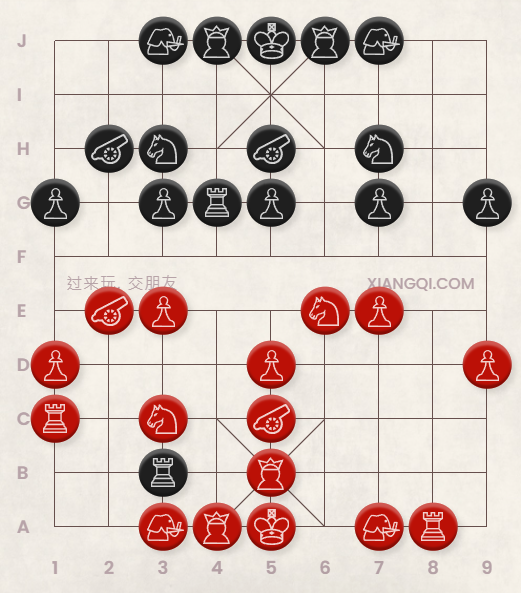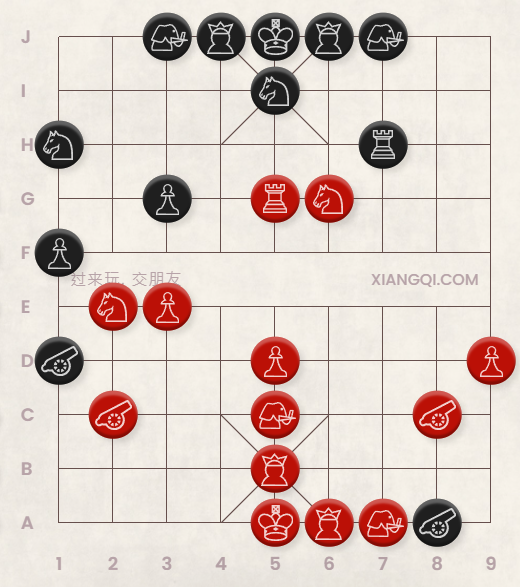10 most important Chinese chess mid-game principles
The mid-game is the most decisive phrase of a Xiangqi game. Unlike the opening phrase, mid-game doesn’t have much to do with memorization, but is more about strategic mindset and your understanding of the principles. Today I am going to introduce the 10 most important mid-game principles in Chinese Chess for you to improve you mid-games.
Author: Johnny Chen (Former Professional Chinese Chess Player, achieved third place in youth team chess in the China National Intellectual Games and second place in the U14 Group of the National Junior Chess Tournament)
The article will be divided into the following sections:
1. Analyze the situation
Many beginners tend to over-emphasize tactics and ignore the importance of situation analysis in the mid-game, that’s why they often ignore the big picture and result in a “win a battle but lose the war” situation. Situation Analysis in Xiangqi is to use the player's knowledge to analyze the strengths and weaknesses of both sides’ formations and make strategic decisions based on the analysis. For example, when you have found yourself in significant material or positional disadvantage, you should turn into defensive mode and aim for a draw, because having unrealistic targets when you are at a disadvantage would likely dig you a bigger hole and accelerate your destruction.
Red to move. By analyzing the situation, we can see that Black has position disadvantage as the coordination between E5 Chariot, D7 Horse, and A9 Cannon is bringing serious threats to red’s defense. Therefore, Red's best response is E7E9, forcing Black to exchange his Cannon. At this point, Black's powerful Bottom Rank cannon has no escape, and can only exchange the red cannon with his horse or cannon.
2. Pay attention to your opponent's intentions
Beginners often make the mistake of only focusing on their own strategic and tactical plan, while ignoring their opponent's intentions, hence falling into the trap set by their opponent.
Black to move. On red's previous move, E7F7, red sacrifices his Soldier. If black captures the Soldier without noticing red’s intention, on the next move, red must gain a Chariot by move E2E9.
3. Learn the value of each piece
Learning the value of each piece can help you to gain material advantage and analyze the situation more accurately.
Soldier: 1 (Before crossing the river) / 2 (After crossing the river)
Advisor: 2
Elephant: 2
Horse: 4
Cannon: 4
Chariot: 9
4. Having a Chariot is usually better than having no Chariot
Having a Chariot is usually better than having no Chariot, even when both sides’ total piece values are approximately equal. It is because, for one thing, the Chariot is the most powerful piece in Xiangqi; for another, the Horse and Cannon are more powerful when coordinating with Chariot.
Black to move. At this point, Black has two Chariots against Red's only Chariot, and a good strategy is to exchange Red's only Chariot. So, Black moves H3G5, inviting the red Chariot to exchange, and at the same time getting rid of the red Chariot's pin on the Horse. If Red avoids the exchange, Black can attack by H6C6, which is difficult for Red to defend. Therefore, Red can only accept the exchange, which leads to the situation where Black has the advantage of “Having a Chariot is better than no Chariot”.
5. Don’t only focus on material, position also matters
Gaining materials is one of the most important ways to win in Chinese Chess. However, gaining materials does not always mean gaining advantage, as advantage includes both material and position. We should avoid the mistake of “overvaluing material”, which means getting into huge positional trouble due to capturing pieces at the wrong time. Also, when the opportunity comes, we can consider sacrificing material for significant position advantage, or even checkmate.
Red to move. In this situation, Black has formed an offensive on Red's right flank, with the Cannon aiming at Red's bottom Elephant and the B8 Horse on a very threatening position. The best move of red here is C5C2 to strengthen the defense by aiming for linking the elephants in the later moves. In the actual game, Red captured the Horse by F2J2, a huge mistake of “overvaluing materials”, then Black made a J8G8 move to chase the horse while preparing a mate threat of G8G6. Red is then at a huge disadvantage.
6. Use Intermediate Move
“Intermediate move” is a tactic that, before performing the expected move, first makes another move that poses a direct threat that the opponent must respond to, then make the expected move.
Red to move. If red directly moves G2E2 to chase the Horse, the black Horse can C7C5 to escape, red cannot catch it. However, if Red first G2I2 to check, forcing Black General to escape by I4J4, then I2E2 to create a double attack of E2E4 mate threat and E2E5 Capture. There is no way for the Black to defend them both, hence Red captures the E5 Horse by intermediate move.
7. Pay attention to both offense and defense
In Xiangqi games, it is important not to be over-aggressive and over-defensive, but to maintain a balance between them. When we are in the upper hand, we should be aware of the potential danger. When the situation is not favoring our side, we should be aware of the chance to counter-attack.
Red to move. At this point, the situation is tense. Red's Chariot and double Cannons have formed a strong offensive on the front line, but Black is threatening Red's central file. At this point, Red makes a clever move, C1B3, to stop the Black offensive by protecting the C5 Elephant, so he can perform his offensive without worrying about his back.
8. Attacking the opponent's weakness
In the mid-game, a Chinese Chess player should actively search for weaknesses in the opponent's formation and seize the opportunity to attack.
Red to move. At this point, the black I5 advisor is pinned by red central Cannon, hence black is prone to be attacked by red Chariot from file 4. Red seized the opportunity by making the F8F4 move to control file 4 to prepare for the Iron-Bolt attack, and won by this tactic not long later.
9. Don’t send your Chariot into dangerous positions
The Chariot is the most powerful piece in Chinese chess. Once it is sent into a dangerous position, it can be easily attacked by the opponent, and you may have to suffer great losses from this. Therefore, beginners should keep in mind not to send their Chariot into dangerous positions.
Red to move. Black's two Chariots are both in dangerous positions, as the B3 Chariot is being isolated and the G4 Chariot is blocked by its soldiers. Targeting this weakness, Red made the C5C7 move to threaten to capture Black’s B3 Chariot, black can only escape the Chariot by B3B2, then red moves C7G7 to double attack Black's G4 Chariot and J7 Elephant at the same time, black must escape his G4 Chariot and see the red Cannon captures the J7 Elephant and form a strong offensive with the A8 Chariot and E6 Horse on his left flank.
10. Move the Centroid Horse out of the palace center
Centroid Horse means having your Horse in your palace center. The Centroid Horse can be easily exploited by the opponent to form a threatening attack, as it would restrict the general’s movement blocking the two soldiers from linking up, especially when the Centroid Horse is pinned by the opponent's Chariot or Chariot in the central file and cannot move, the general will have no way to escape once attacked and would be easily checkmated. Sometimes, for some tactical reasons, we may take the initiative or be forced to move our Horse to the palace center, but it is best not to stay in this position for a long time to avoid being exploited and attacked by the opponent.
Red to move. At this point, Black's Centroid Horse is 2pinned by the Red Chariot and cannot escape, while at the same time restricting the movement of his general and the two advisors. Taking advantage of this, Red makes a brilliant move of sacrificing the Chariot by G5H5 to form a checkmate. If Black captures the H5 Chariot by its Chariot, Red can checkmate by G6I7; if Black captures the Chariot with an Elephant, Red can checkmate by G6H4. This is a typical case of a player being defeated due to not handling the Centroid Horse properly.
Already eager to play?


